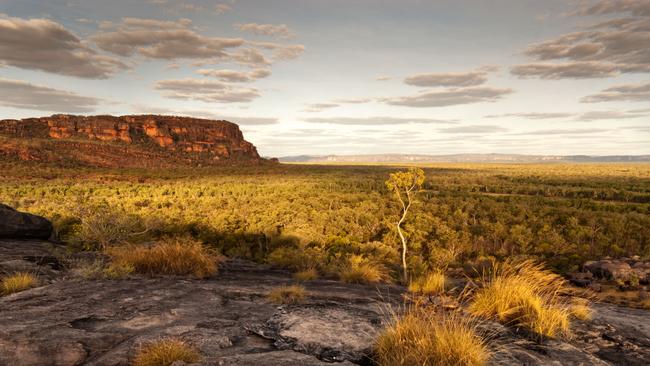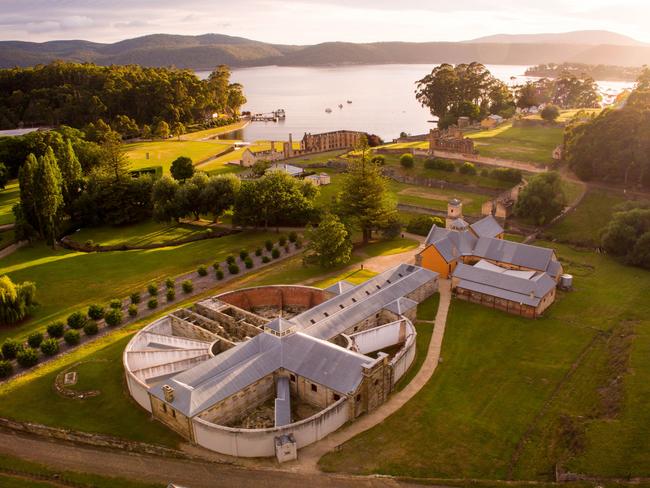From Kakadu to the Opera House, Australia is full of wonders
Australia’s World Heritage sites range from the natural to man-made grandeur.

Kakadu National Park, Northern Territory
The most remarkable element of this park is the way outstanding natural heritage is intimately connected with exceptional cultural heritage. It is this juxtaposition of natural features and ongoing culture that most impressed the UNESCO evaluators in 1981 and that today inspires visitors.
Up to 65,000 years ago, the first people were already living at Kakadu. This was a time when the great ice sheets of the latest glacial period were advancing south over much of Europe. The ancestors of the first people had made their way from Africa across the edge of the great continent of Eurasia and eventually through Southeast Asia and into Australia. What these first people found at Kakadu was a mix of high sandstone plateaus and minor river systems in a grassy savanna woodland. The area had not yet developed the rich wetlands of today. The fauna the first arrivals encountered was strange and new. Apart from the novelty of marsupials like kangaroos, there were also giant herbivores (diprotodons) and large carnivores (marsupial lions). Over the subsequent tens of thousands of years, Kakadu people came to know the land intimately. They have conveyed their knowledge of it across generations through song, stories, dance and art.
Great Barrier Reef, Queensland

The world’s greatest reef extends 2300km along the northeast coast, protecting the coastline from swells and storm waves and providing a mosaic of reef patches, islands and sheltered water. It also provides a barrier to shipping, as James Cook found in 1770 when the Endeavour ran aground on a reef near present-day Cooktown.
Within the Great Barrier Reef are more than 2500 reefs of varying sizes and shapes, providing homes for 400 species of coral and 1500 species of fish. There are also 4000 species of mollusc and a great diversity of crustaceans, sponges, anemones and marine worms as well as marine mammals. Within the marine park there are 900 islands — from sandy coral and vegetated cays to rugged continental outcrops.
Lord Howe Island Group
This World Heritage area is an example of oceanic islands of volcanic origin. The islands provide important breeding grounds for seabirds as well as critical habitat for threatened plants and animals. Although the terrestrial area is small (1540ha), the mountains rise abruptly to 875m (Mount Gower) before plunging into the sea.
They impose a grandeur in contrast to the central area with its beaches and shallow inshore waters. The main island is dominated by palms and rainforest and almost half of the island’s 241 species of plants are endemic.
Tasmanian Wilderness
UNESCO uses 10 criteria to determine whether a place is of sufficient significance for inscription on the World Heritage List. A property only needs to meet one of these criteria to be accepted. The Tasmanian Wilderness World Heritage area meets seven.
Only one other site from more than 1000 in the world has also met seven criteria; Mount Taishan in China. The geological landscape of the Tasmanian wilderness displays the effects of severe glaciation over the last 34 million years. It is an exceptional southern hemisphere record of glacial processes, features and landscape evolution.
During the most recent glacial maximum, ice covered much of the highlands of Tasmania and, in the course of formation, movement and retreat, shaped much of what is present today. Glaciers abraded the landscape, scouring out valleys and forming lakes as they flowed slowly from the mountains and again as they retreated in a warming climate. Dove Lake is an excellent example of a glacial lake. One of the most appealing scenes is the view across Dove Lake to the Cradle Mountain skyline behind. Lake St Clair was scoured by glaciers to become Australia’s deepest freshwater lake.
Gondwana Rainforests, Queensland and NSW
Located along the central east coast, the Gondwana Rainforests consists of 41 separate areas forming rainforest remnants that extend from Barrington Tops National Park in NSW to Main Range National Park in Queensland. Ten of the patches are quite large (10,000ha or more), including national parks such as Border Ranges, Washpool, New England and Lamington. Another seven are between 2000ha and 5000ha, including Springbrook in Queensland and Wollumbin and Nightcap in NSW. These elements cover a distance of 500km; scattered over that area are another 24 smaller patches of forest. Together, these reserves capture the outstanding geological history of volcanism as well as the distinctive temperate and subtropical rainforests that are remnants of the former Gondwana vegetation.
Shark Bay, WA
On the Indian Ocean coast, the waters, islands and peninsulas of Shark Bay World Heritage area cover 2,200,902ha and were inscribed on the World Heritage List in 1991. About 70 per cent of this area is marine and it was for three outstanding marine elements that the area was deemed of international significance.
The first is the vast seagrass meadows, the largest and richest in the world. These support one of the world’s largest populations of dugongs. The third outstanding marine element is the exceptional stromatolite colonies, with their hard, dome-shaped deposits rising along the shores of Hamelin Pool and elsewhere. In 1956 the first living stromatolites were discovered at this site. Before then, it was thought only fossil forms existed.
Heard and McDonald Islands

Rising from remote subantarctic waters, Heard Island is 4100km southwest of Perth and 1500km north of Antarctica. It is one of the wildest and most remote places on Earth, deep in the Furious Fifties and subject to consistently harsh weather. Heard Island (36,800ha) is dominated by Big Ben. An active volcano, covered by glaciers, at 2745m it is Australia’s highest mountain. To the west, the much smaller McDonald Island has steep cliffs rising to about 230m and in recent years volcanic activity has extended its area to about 2500ha, uniting it with the formerly separate Flat Island.
The profile of Heard Island reflects the bleak environment, with a narrow fringe of low and extremely tough vegetation along the shore, bare slopes rising starkly and steeply, some dotted with penguin colonies, and vast areas of snow-covered slopes and glaciers soaring to Mawson Peak.
Royal Exhibition Building and Carlton Gardens, Melbourne
Just a few hundred metres from Parliament House in Melbourne, Carlton Gardens provides the setting for the Royal Exhibition Building. Occupying 26ha of prime real estate, this World Heritage site was designed to accommodate the great Melbourne International Exhibition in 1880. It was conceived as a palace of industry, a place to both show and celebrate the achievements of science and the industrial revolution. All manner of novel machinery, products, inventions and art from across the world were the focus of such international exhibitions and had enormous appeal for visitors.
Sydney Opera House
This building was inscribed on the World Heritage List in 2007 as a masterpiece of 20th-century architecture. It is the most recognisable building in Australia. In nominating the site, the federal government noted the design by Danish architect Jorn Utzon “represents an extraordinary interpretation and response’’ to the breathtaking setting of Sydney Harbour.
Convict sites

This listing has 11 convict sites dating from 18th- and 19th-century colonial Australia. They housed male and female convicts and children, transported from Britain and Ireland. The system was harsh: the penalties imposed by the British system; the appalling conditions of the prisons (often hulks) before transportation; the arduous and long journey to Australia; and the harsh treatment.
On arrival, convicts faced punitive imprisonment and forced labour. Some 3000 sites were built to hold new arrivals — 166,000 convicts passed through between 1788 and 1869. The listed sites are: Kingston and Arthurs Vale, Norfolk Island; Old Government House and Domain, Parramatta, NSW; Hyde Park Barracks, Sydney; Old Great North Road, Wisemans Ferry, NSW; Cockatoo Island, Sydney Harbour; Brickendon and Woolmers Estates, Longford, Tasmania; Darlington Probation Station, Maria Island, Tasmania; Cascades Female Factory, Hobart; Port Arthur, Tasmania; Little Norfolk Bay, Tasmania; and Fremantle Prison, Western Australia.
This is an edited extract from World Heritage Sites of Australia by Peter Valentine; NLA Publishing; $49.99.

To join the conversation, please log in. Don't have an account? Register
Join the conversation, you are commenting as Logout